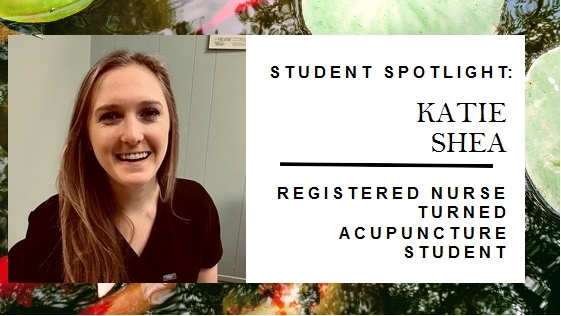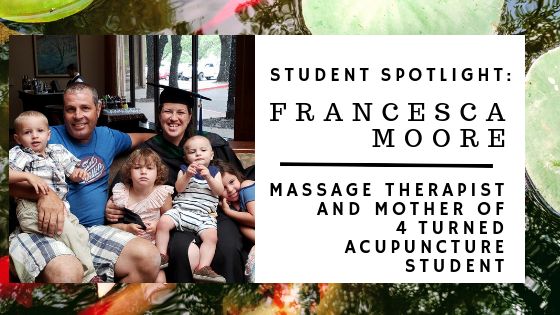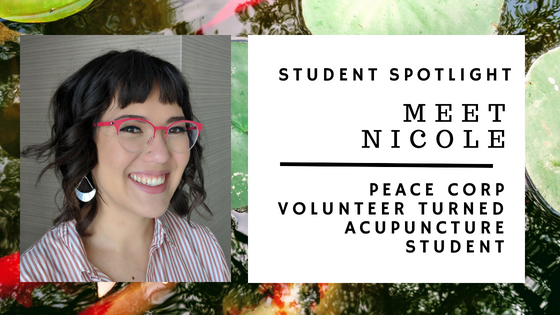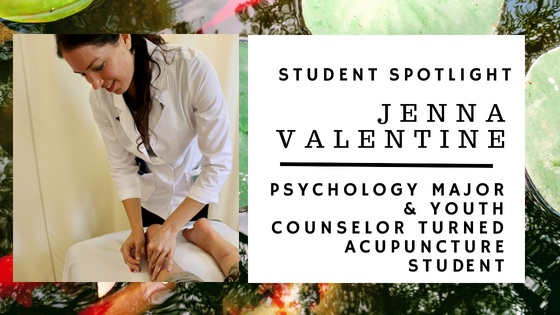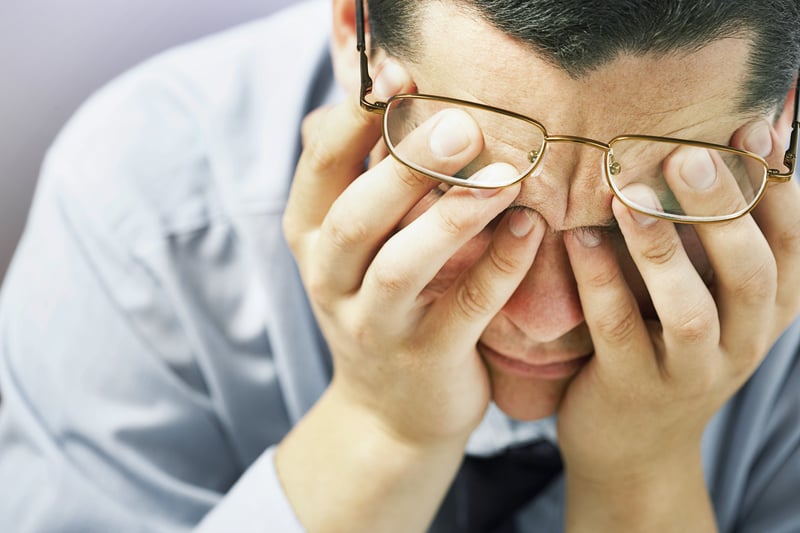
Workplaces can be hazardous to your health! Some job-related health concerns like back pain, stress, and colds and flus are quite well-known and get lots of media attention – probably because they’re so widespread. Many employees also suffer from less-obvious job-related health concerns like tobacco addiction, repetitive strain injuries, digital eye strain, and reduced mental acuity. The ultimate result of these workplace conditions is unhealthy, unhappy workers missing work and missing paychecks, which contributes to an overall decline in company productivity. And many employees don’t realize that their job is hurting them until they’re already suffering!
While they might be ancient forms of medicine, acupuncture and traditional Chinese herbs are still highly relevant in today’s workplace and can be effective methods for treating many common and not-so-common job-related health concerns. Read on to discover 8 ways that acupuncture can improve you -- and your employees’ -- health, happiness, and overall wellness in the workplace.
1. Relieve Pain
Acupuncture is most commonly associated with pain relief – at least in the United States. Medical professionals, insurance companies, and the U.S. Department of Veterans Affairs have extensively researched and proven the efficacy of acupuncture for pain relief, and are utilizing acupuncture for pain relief, particularly back pain. A recent study using fMRI imaging has shown that acupuncture changes the way the human brain perceives pain, reducing or modulating activity in the parts of the brain that are responsible for pain perception (Theysohn). The same study also showed that acupuncture reduces or modulates activity in the parts of the brain that are responsible for translating pain sensations into cognitive awareness, meaning a patient’s expectation of pain can be lowered by acupuncture as well.
Low back pain (LBP) is the second most common cause of disability in adults in the United States, and an estimated 149 million days of work per year are lost due to LBP (Freburger). An employee in pain is not a productive one, and neither long-term disability nor opioid addiction will make them more productive! While not as commonly-prescribed by physicians as painkillers, acupuncture is a safe and all-natural treatment for back pain that has proven to be more effective than no treatment (Brinkhaus). In addition to affecting brain activity and chemistry through the release of endorphins and serotonin, acupuncture relaxes muscles to increase blood flow and bring relief to tight or stressed tissues.
2. Reduce Stress
Our bodies are naturally hardwired to handle stress, but over time too much stress takes its toll! When we feel threatened the sympathetic nervous system is activated, causing the heart rate to increase, the pupils to dilate, and blood to be directed towards the extremities, which in turn causes digestion to temporarily shut down. Cortisol is also released, causing increases in blood pressure and inflammation while suppressing the immune system. If our bodies continue to release high amounts of cortisol, chronic symptoms such as anxiety, depression, fatigue, digestive issues, and tension headaches can develop.
In Chinese medical theory, strong emotions like stress interrupt the body’s energy from flowing smoothly. When these strong emotions are present for long periods of time they create a blockage in the body’s “road system” creating an energetic “traffic jam.” Acupuncture increases the circulation of blood and oxygenates the tissues throughout the body while cycling out cortisol and releasing natural pain-killers called endorphins. Other benefits of acupuncture include decreasing the heart rate, lowering blood pressure, and relaxing the muscles to help the person feel less stressed.
3. Prevent Injuries & Promote Injury Recovery
Repetitive strain injuries (RSIs) are extremely common workplace injuries. As the name suggests they are injuries of overuse, resulting from repeating the same movements again and again, over prolonged periods of time. Many of us have jobs that require us to perform activities that put us at risk for an RSI every single day, including but not limited to heavy lifting, driving, exposure to loud noises, constant use of a computer mouse, and vibration of the whole body. To help prevent workplace injuries, “not only muscle weakness, but chronic muscle contracture, calcification, and inflammation must be addressed” (Reller). Acupuncture works to restore function to deep stabilizing and impinging muscles, so that chronic stress is decreased on joint tissues. The healthier joint and muscle tissue are, the more resilient and resistant to injury they become.
Once an employee suffers an occupational injury, acupuncture can reduce inflammation and swelling; stimulating tissue repair and decreasing recovery time. It can also increase strength and improve range of motion to aid the body’s natural healing, as well as increase flexibility to prevent future re-injury. Both insurers and employers are beginning to explore the potential favorable impact of acupuncture on workplace injury recovery. In fact, the Washington East Asian Medicine Association(WEAMA) is currently piloting a multi-year project to research and review acupuncture’s effectiveness at treating workers’ compensation injuries, with the end goal of allowing acupuncturists in Washington to be reimbursed for treating workers’ comp claims.
4. Eliminate Tobacco Use
Despite the abundance of evidence regarding the negative effects of tobacco, people continue to use tobacco products because of the addictive nature and stress-reducing “comfort” of nicotine. But the health risks aren’t the only reason to quit - since 2014 the Affordable Care Act has permitted employers and insurance companies to charge tobacco users up to 50% more in health insurance premiums!
Acupuncture has been shown to have great success with treating a full range of addictions and addictive behaviors, and has been proven to be especially useful and successful in helping people quit using tobacco. Acupuncture works to adjust cravings by balancing brain chemistry and helping to heal the physical damage the body undergoes from using tobacco products.
Herbal medicine is frequently combined with acupuncture to control cravings and withdrawal symptoms; taking Chinese herbs throughout the day can help support the detoxification process and reduce relapses. In addition to curbing cravings and eliminating jitters, acupuncture can treat stress, irritability and restlessness, anxiety, headaches, and dry mouth. It also helps to promote relaxation, detoxification, and tissue repair.
5. Boost Immune System
According to the CDC, the flu causes workers in the United States to lose up to 111 million workdays, at an estimated cost of $7 billion a year in sick days and lost productivity. Acupuncture has been used for thousands of years to help enhance the immune system and ward off illness. Its immune-stimulating functions treat all types of cold and flu effectively, achieving a quick recovery without side effects. Several clinical studies have demonstrated that Chinese medicine reduces the incidence of upper respiratory tract infections in addition to shortening the course of illness.
Chinese medicine views colds and flus as pathogenic invasions that can easily be expelled using specific acupuncture points and herbs. If caught in the early stages, especially within the first few hours of the onset of symptoms, acupuncture, herbal medicine, and qigongcan be very effective at eliminating pathogens before they have a chance to fully manifest. Once a cold or flu has progressed beyond the early stages, Chinese medicine can be used as symptomatic relief and adjunct therapy.
Particularly here in Austin during the fall and winter seasons, allergens like cedar pollen can cause intense and debilitating cold and flu-like symptoms. Traditional Chinese medicine views cedar fever as an overactive immune response, and acupuncture is an extremely effective method for calming down the immune system. This helps to reduce symptoms, and the overall balancing of the immune system helps to reduce the frequency and severity of future allergy reactions. A recent study by Dr. Benno Brinkhaus concluded that, in addition to being safe, acupuncture led to statistically significant improvements in the quality of life of allergy patients after just 8 weeks of treatment (Sifferlin).
6. Improve Sleep Quality
Insomnia is a serious disorder that is more than just tossing and turning to fall asleep or stay asleep. It is one of the most common sleep disorders, believed to impact almost 50% of all adults. Physical symptoms of fatigue are experienced along with feeling irritable, tense, lethargic, or even depressed. Insomniacs may also experience delayed reaction times, poor memory, focus, and concentration, increased distractions, and headaches.
Recent studies report that patients experienced a significant improvement in sleep quality, and a reduction in insomnia, fatigue and depression after receiving acupuncture (Spence). The nervous system is calmed by acupuncture, which clears obstructions in the muscle and nerve channels, creating a flow of oxygen-enriched blood to relax the nervous system and prepare for sleep. A preliminary report in 2004 found that even in patients with anxiety, acupuncture increased nighttime melatonin production and total sleep time (Spence). Using acupuncture and Chinese herbs can also help treat disturbances in the whole body that prevent restful sleep, such as chronic pain, breathing issues, and digestive distress.
7. Improve Memory, Focus, & Concentration
According to traditional Chinese medicine, the spirit or Shen of the Heart plays a prominent role in memory, focus, and concentration. “Shen influences long-term memory and the ability to think clearly, contributes to wisdom and presides over activities that involve mental and creative functions” (acufinder.com). Traditional Chinese herbal medicine formulas can help calm Shenand resolve any disharmony between brain and spirit, as well as increase blood flow to the brain and/or reduce foggy headedness. Traditional Chinese nutritional recommendations can also help to boost memory and focus, particularly foods that are high in essential nutrients such as flavonoids, Omega 3 fatty acids, folate, and iron (acufinder.com).
In addition to herbal treatment for brain function, studies have shown that acupuncture has a measurable “activating” effect on the brain. Areas of the brain known to respond to painkillers were activated, but so too was the insula, which is part of the cerebral cortex (von Bubnoff). While it is not entirely clear yet what this activation of the insula fully means, the cerebral cortex is a very large area of the brain that plays a key role in memory, attention, and cognition.
8. Relieve Symptoms of Digital Eye Strain
The American Optometric Association defines Computer Vision Syndrome (CVS)/Digital Eye Strain as a group of eye and vision-related problems that result from prolonged computer, tablet, e-reader, and cell phone use. Many individuals experience eye pain and vision problems when viewing digital screens for extended periods, and the level of discomfort seems to increase with the amount of digital screen use (Thorud). Viewing a computer or digital screen makes the eyes work harder; as a result, many individuals experience eyestrain, headaches, blurred vision, dry eyes, and/or neck and shoulder pain after prolonged computer use (Thorud). As more occupations require daily extended digital screen use, not to mention increased screen use during recreational hours, occurrences of eye strain, pain, and fatigue will rise. Studies have shown that acupuncture is an effective means of treating eye pain as well as ophthalmic migraine and dry eyes (Nepp).
In addition to eye pain, strain, and fatigue caused by too much screen time, acupuncture can boost overall visual acuity, reduce sensitivity to light, and reduce or eliminate eye floaters and blurred vision.
Would you like more information? Are you interested in bringing acupuncture into your workplace? Contact the AOMA Clinics today!
Interested in scheduling an appointment with us? Request an Appointment online today!

References:
- Janet K. Freburger, PT, PhD; George M. Holmes, PhD; Robert P. Agans, PhD; Anne M. Jackman, MSW; Jane D. Darter, BA; Andrea S. Wallace, RN, PhD; Liana D. Castel, PhD; William D. Kalsbeek, PhD; Timothy S. Carey, MD, MPH
“The Rising Prevalence of Low Back Pain”
Arch Intern Med. 2009;169(3):251-258. doi:10.1001/archinternmed.2008.543
http://jamanetwork.com/journals/jamainternalmedicine/fullarticle/414769
- D. Warren Spence, M.A., Leonid Kayumov, Ph.D., DABSM, Adam Chen, Ph.D., Alan Lowe, M.D., Umesh Jain, M.D., Martin A. Katzman, M.D., Jianhua Shen, M.D., Boris Perelman, Ph.D., and Colin M. Shapiro, MBBCh, Ph.D., FRCP(C)
“Acupuncture Increases Nocturnal Melatonin Secretion and Reduces Insomnia and Anxiety: A Preliminary Report”
The Journal of Neuropsychiatry and Clinical Neurosciences, Volume 16, Issue 1, February 2004, pp. 19-28
http://neuro.psychiatryonline.org/doi/abs/10.1176/jnp.16.1.19
- Sifferlin, Alexandra. “Is Acupuncture an Antidote for Allergies?”
Article published on Time.com on Feb. 19, 2013
http://healthland.time.com/2013/02/19/is-acupuncture-the-antidote-for-allergies/
- Benno Brinkhaus, MD; Claudia M. Witt, MD; Susanne Jena, MSc; et al
“Acupuncture in Patients With Chronic Low Back Pain: A Randomized Controlled Trial”
Arch Intern Med. 2006;166(4):450-457. doi:10.1001/archinte.166.4.450
https://jamanetwork.com/journals/jamainternalmedicine/fullarticle/409858
- Nina Theysohn, M.D., Kyung-Eun Choi, M.Sc., Elke Gizewski, M.D., Ph.D., Thomas Rampp, M.D., Gustav Dobos, M.D., Ph.D., Michael Forsting, M.D., Ph.D., and Frauke Musial, Ph.D
“Acupuncture Changes Brain's Perception and Processing of Pain:
Radiological Society of North America press release on November 30, 2010
https://press.rsna.org/timssnet/media/pressreleases/pr_target.cfm?ID=515
- Von Bubnoff, Andreas. “Acupuncture Activates the Brain”
Article published on BioEd Online on May 1, 2005
http://www.bioedonline.org/news/nature-news/acupuncture-activates-brain/
- Nepp, Johannes; Jandrasits, Kerstin; Schauersberger, Joerg; Schild, Gebtraud; Wedrich, Andreas; Sabine, Gräser Lang; Spacek, Anna
“IS ACUPUNCTURE AN USEFUL TOOL FOR PAIN-TREATMENT IN OPHTHALMOLOGY?”
Acupuncture & Electro-Therapeutics Research, Volume 27, Numbers 3-4, 2002, pp. 171-182(12)
https://www.ingentaconnect.com/content/cog/aetr/2002/00000027/F0020003/art00002
- Thorud, Hanne-Mari Schiøtz*; Helland, Magne†; Aarås, Arne‡; Kvikstad, Tor Martin†; Lindberg, Lars Göran; Horgen, Gunnar
“Eye-Related Pain Induced by Visually Demanding Computer Work”
Optometry and Vision Science: April 2012 - Volume 89 - Issue 4 - p E452–E464
https://journals.lww.com/optvissci/Fulltext/2012/04000/Eye_Related_Pain_Induced_by_Visually_Demanding.13.aspx
- Acufinder.com Editorial Staff. “Boost Your Brain Power with Acupuncture”
https://www.acufinder.com/Acupuncture+Information/Detail/Boost+Your+Brain+Power+with+Acupuncture+
 ose. I moved back to Austin and began work at a wonderful organization, The Marbridge Foundation, which is a residential care facility for adults with intellectual disabilities. I worked there full-time before starting AOMA master’s program. I stayed on as a part-time employee all throughout my time at AOMA, and left Marbridge all together about a year ago. It was a wonderful place to work and my experiences there instilled in me patience, communication skills, and stress management skills for myself as well as for patients.
ose. I moved back to Austin and began work at a wonderful organization, The Marbridge Foundation, which is a residential care facility for adults with intellectual disabilities. I worked there full-time before starting AOMA master’s program. I stayed on as a part-time employee all throughout my time at AOMA, and left Marbridge all together about a year ago. It was a wonderful place to work and my experiences there instilled in me patience, communication skills, and stress management skills for myself as well as for patients.
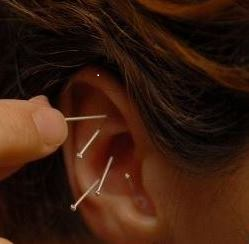 tobacco, methamphetamine, and cocaine abuse makes it a promising adjunct to medical and behavioral treatment methods in a very challenging patient population. Additionally, the NADA protocol has been used for stress management, including post-traumatic stress, treating addicted pregnant women, sleep disorders, and anxiety. It has been used in refugee camps, post-hurricane settings, prisons, hospitals, rehabilitation treatment centers, as well as outpatient clinics, predominantly in a group treatment context.
tobacco, methamphetamine, and cocaine abuse makes it a promising adjunct to medical and behavioral treatment methods in a very challenging patient population. Additionally, the NADA protocol has been used for stress management, including post-traumatic stress, treating addicted pregnant women, sleep disorders, and anxiety. It has been used in refugee camps, post-hurricane settings, prisons, hospitals, rehabilitation treatment centers, as well as outpatient clinics, predominantly in a group treatment context..jpg?width=1973&name=Acupuncture%20(5).jpg)
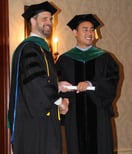 of schooling required. People are often shocked to learn that a Master Degree is required before they may sit for the National Boards exams. What’s more, this is not your standard two year Master’s. AOMA’s program is 203.5 quarter credits (equal to 135.6 semester credits), typically takes four and a half years, and involves a total of 2970 instructional hours. Of those, 161.5 of the credits, or 1962 hours are Didactic and 42 credits, 1008 hours, are clinical.
of schooling required. People are often shocked to learn that a Master Degree is required before they may sit for the National Boards exams. What’s more, this is not your standard two year Master’s. AOMA’s program is 203.5 quarter credits (equal to 135.6 semester credits), typically takes four and a half years, and involves a total of 2970 instructional hours. Of those, 161.5 of the credits, or 1962 hours are Didactic and 42 credits, 1008 hours, are clinical..jpg?width=136&name=Classroom_Blood%20Pressure%20(1).jpg) working alongside other healthcare providers with the best interest of the patient in mind. To this end AOMA’s program covers a wide range of biomedical topics including Medical Biochemistry, Pathophysiology, and Biomedical Pharmacology among others.
working alongside other healthcare providers with the best interest of the patient in mind. To this end AOMA’s program covers a wide range of biomedical topics including Medical Biochemistry, Pathophysiology, and Biomedical Pharmacology among others.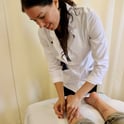 acupuncture programs require a lot of clinical and hands on laboratory hours. As mentioned earlier, 1008 of AOMA’s 2970 instructional hours are clinical, this translates to 34%, one third of the program. This process begins with Clinic Theater I in which students are exposed to the diagnostic methods of TCM including the techniques and application of acupuncture and Chinese herbal medicine by observing professional treatments performed by a member of the AOMA faculty. This culminates in a full clinical internship, in which the student, as a supervised intern, performs the intake, diagnosis, and treatment of patients.
acupuncture programs require a lot of clinical and hands on laboratory hours. As mentioned earlier, 1008 of AOMA’s 2970 instructional hours are clinical, this translates to 34%, one third of the program. This process begins with Clinic Theater I in which students are exposed to the diagnostic methods of TCM including the techniques and application of acupuncture and Chinese herbal medicine by observing professional treatments performed by a member of the AOMA faculty. This culminates in a full clinical internship, in which the student, as a supervised intern, performs the intake, diagnosis, and treatment of patients.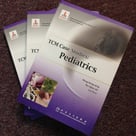 academic backgrounds, and published research. At AOMA there are 37 faculty members, including 29 Licensed Acupuncturists, 7 Medical Doctors, 2 Ph.D.’s and 6 faculty members who hold both an MD and a Ph.D. AOMA Graduate School is also the home of the only Chinese herbal pharmacologist Ph.D. in the United States. About two thirds of our faculty bring to the table at least a decade of tenure and many years of training and practicing TCM in China.
academic backgrounds, and published research. At AOMA there are 37 faculty members, including 29 Licensed Acupuncturists, 7 Medical Doctors, 2 Ph.D.’s and 6 faculty members who hold both an MD and a Ph.D. AOMA Graduate School is also the home of the only Chinese herbal pharmacologist Ph.D. in the United States. About two thirds of our faculty bring to the table at least a decade of tenure and many years of training and practicing TCM in China.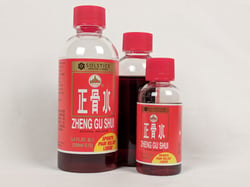
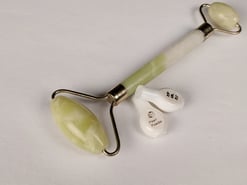
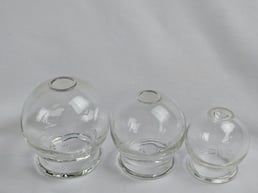
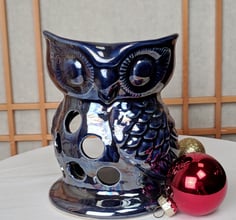
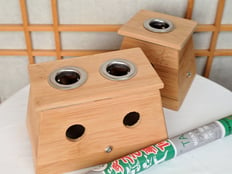
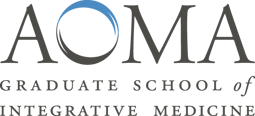
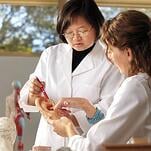
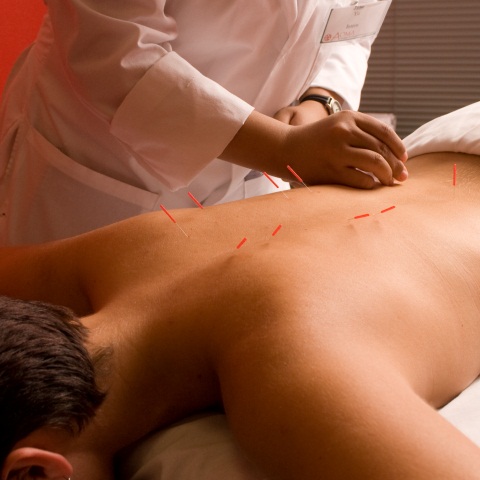 Professional opportunities
Professional opportunities.jpg?width=225&height=150&name=students_studying_(2).jpg)
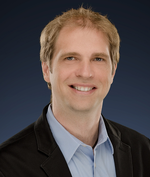 is an accomplished researcher and skilled health care practitioner with a rich academic and professional background. His interest in lifestyle and environmental determinants of health led him to earn a Doctor of Naturopathic Medicine and a Master of Science in Acupuncture & Oriental Medicine from Bastyr University, as well as a Master of Public Health in Epidemiology from the University of Washington. As a practitioner of Naturopathic and Chinese medicines, Dr. Finnell’s clinical focus is on nutrition, pharmacognosy, herb-drug interactions, mind-body medicine, disease prevention, and lifestyle education. In addition to maintaining a professional Naturopathic and Chinese medicine practice, Dr. Finnell has also completed a post-doctoral fellowship with the National Center for Complementary and Alternative Medicine (NCCAM), and served as the acting Director of Research for the TrueNorth Health Foundation. Dr. Finnell’s strong research background and clinical experience as a Naturopathic and Chinese medicine practitioner enable him to bring an evidence-based and integrative perspective to AOMA’s doctoral program.
is an accomplished researcher and skilled health care practitioner with a rich academic and professional background. His interest in lifestyle and environmental determinants of health led him to earn a Doctor of Naturopathic Medicine and a Master of Science in Acupuncture & Oriental Medicine from Bastyr University, as well as a Master of Public Health in Epidemiology from the University of Washington. As a practitioner of Naturopathic and Chinese medicines, Dr. Finnell’s clinical focus is on nutrition, pharmacognosy, herb-drug interactions, mind-body medicine, disease prevention, and lifestyle education. In addition to maintaining a professional Naturopathic and Chinese medicine practice, Dr. Finnell has also completed a post-doctoral fellowship with the National Center for Complementary and Alternative Medicine (NCCAM), and served as the acting Director of Research for the TrueNorth Health Foundation. Dr. Finnell’s strong research background and clinical experience as a Naturopathic and Chinese medicine practitioner enable him to bring an evidence-based and integrative perspective to AOMA’s doctoral program.

